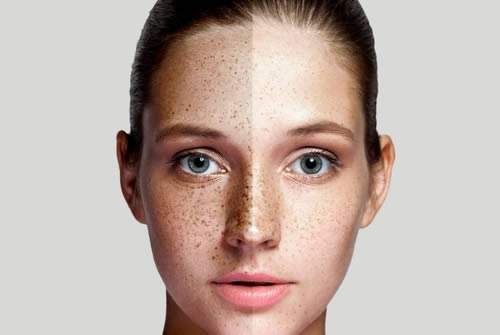
Skin Pigmentation: Debunking The Myths And Embracing The Facts
Many of us crave for skin that is completely flawless; we want skin that is not only soft and bouncy, but also sans any and all scars, blemishes or dark spots. But the fact of the matter is that very few of us have the kind of skin that we often dream of – given. The kind of fast paced lives that we lead, means that we might not get the time to take care of skin, they way we should. Our body is exposed to not only pollution and dirt. But also the harsh rays of the sun and then there are problems with our diet too!
Skin pigmentation is one of the most common problems – there could actually be many of us who are suffering from some variant of the condition. Without even knowing about the same. All of us have a pigment in our body called melanin and it is the amount as well as. The distribution of this pigment that determines our skin color. Both these aspects are affected by a range of factors including. Exposure to the sun, a change in the hormones of the body, medical conditions and even our genes. When there is an imbalance of the pigment, it leads to pigmentation.
The start of understanding skin pigmentation & its treatments would probably begin with the most common types of pigmentation:
- Hyperpigmentation and hypopigmentation – When certain patches of your skin become darker due to over production of melanin, it is referred to as hyper-pigmentation. And when the opposite happens, that is, certain patches of your skin have lesser melanin, as compared to the rest of the skin, it is known as hypo-pigmentation.
- Melasma – This is a condition wherein dark brown patches appear on the skin. Because of hormonal changes in the body, certain types of medical conditions or even over exposure to the sun.
- Vitiligo – When the melanocytes are destroyed in the body. You will start seeing white or really light-coloured patches on the body.
There is also a condition that is known as albinism, but this is a genetic condition, wherein the body does not produce a sufficient amount of melanin. Leading to skin that is very pale and even the hair will be really light coloured.
In order to get a better understanding of skin pigmentation & its treatments. It is also imperative to understand that there are several myths associated with this condition. Here are some of the most common myths and the actual facts:
Myth: Hyper-pigmentation will affect only people who have dark skin
Fact : There is no ethnic discrimination when it comes to hyper pigmentation – it can affect anyone and everyone. Yes, it might be more noticeable in people who have a darker skin tone. Because it becomes more visible in contrast with the surrounding skin. But there is no restriction. People with any skin tone can be affected by this condition, especially those who are constantly out in the sun, without the proper protection.
Myth: If you have hyper-pigmentation, you do not need sunscreen.
Fact : Your skin is already affected, so would you not want to protect from further damage? Sunscreen is actually crucial for people who are already affected by hyper-pigmentation. Because the more you subject your skin to sun exposure, the worse the condition could become. If you want to protect your skin, whether you have hyper-pigmentation or not, it is necessary that you use a broad-spectrum sunscreen.
Myth: You don’t need sunscreen when you are indoors or are traveling in a vehicle.
Fact : If the UV rays of the sun can reach you, you need sunscreen. This means that if you are travelling in a car, if you are working near a window. Where the sunlight streams in, you are susceptible to skin pigmentation. It is important to remember that while windshields and screens can help you protect to some extent from UVA rays, they will not do the same against UVB rays. It is also important to remember that even indoors. When your skin is being touched by the rays of the sun. It is at risk and sunscreen is the best way to protect it.
Myth: Exfoliating the skin will help remove pigmentation.
Fact : When you are trying to get a proper understanding of skin pigmentation & its treatments, you need to realize that exfoliation has nothing to do with treating pigmentation. While regular exfoliation can help get rid of dead skin cells and reveal healthier skin. It is not as powerful a method to treat conditions such as pigmentation. As a matter of fact, if you exfoliate too much, it could aggravate the condition, causing inflammation. Proper treatment of pigmentation has to be done at the hands of an experienced doctor or dermatologist.
Myth: Laser treatments are the only way to go.
Fact : Well, there is some truth to this myth –there are some types of lasers treatments that could help, but just opting for any random treatment will not. You need to meet with a medical practitioner, preferably a skin specialist or dermatologist, who will first check your type of pigmentation and then suggest the right course of treatment. In some types of pigmentation, a chemical peel might work better, while in some cases, skin lightening creams might be the better option.
Myth: Hydroquinone is dangerous for your skin.
Fact : This is actually a funny one, because there are two contrasting opinions. There is one set of people who believe that hydroquinone is toxic to the skin. While there is another set that feels that this is the one way out. While hydroquinone can be effective in treating pigmentation. It needs to be administered in exact measurements. Moreover, there are other modern ingredients such as retinoids, pure vitamin C and azelaic acid. That are proving to be really effective in treating pigmentation. Talking to your doctor would give you a clearer picture as well as a better course of treatment.
Myth: Neither can you prevent pigmentation nor can you cure it.
Fact : There are ways to avoid pigmentation and there are certainly ways of curing or treating it too! If you want to prevent it. You need to educate yourself first. By understanding skin pigmentation & its treatments. You will realise that taking some very basic steps. Such as avoiding direct sun exposure, if you are stepping out in the sun remembering to apply sunscreen, having a proper skin care routine. Which includes exfoliation as well as proper moisturi sation are all ways by which you can try preventing pigmentation. And when you talk to your dermatologist. Based on the type of pigmentation that you might have, they will be able to suggest a treatment protocol.
By taking the time to get a better understanding of skin pigmentation & its treatments. You will come to realize that there are so many myths surrounding it, but the facts will leave you better equipped!
















